Moringa belongs to the Moringaceae family. In general, fertilizers will help trees grow faster and healthier. Moringa plants benefit from the light use of a common, all-purpose fertilizer to support growth. Once established, Moringa plants do not need regular fertilization. However, they benefit from regularly modifying their topsoil with compost or manure. Let’s check out the best fertilizer for Moringa plant, why it is important to fertilize Moringa trees, and the best way to fertilize Moringa trees.
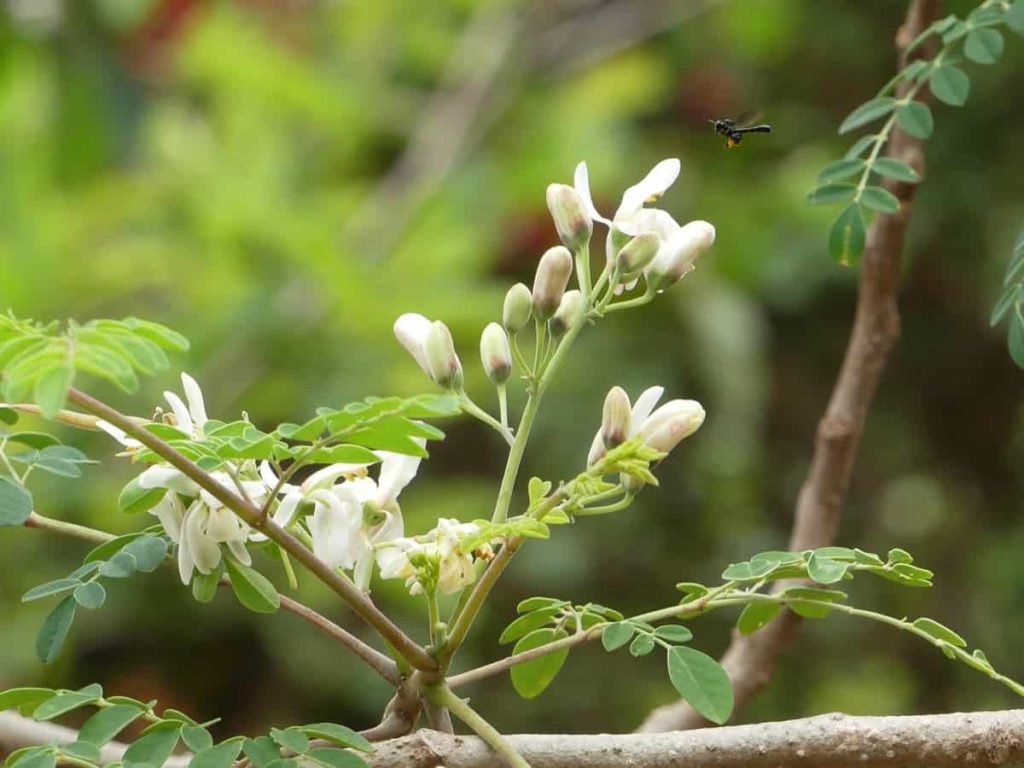
Fertilizer management for Moringa tree
Fertilizer management plays an important role in crop growth and development. Maximizing the use of different fertilizers increases crop growth, development, and yield. According to the current trend, the level of increase in production is increasing due to the increase in the level of nutrition per unit area. Fertilizer management is an important factor in significantly increasing crop yields.
In the current context of high fertilizer prices, it is important to work on the maximum and economic need for fertilizer for the Moringa crop. Nutrition management is managing crop fertility inputs and other production methods for efficient crop growth and protection of water quality. Organic and inorganic fertilizers play an important role in improving the nutritional value of the Moringa.
Established Moringa plants are low maintenance and require very little care, especially if grown outdoors year-round. Moringa trees usually grow well without too much fertilizer. Manure or compost can be mixed with the soil used to fill planting pits. Phosphorus can be added to stimulate root growth and nitrogen will stimulate leaf canopy growth.
In some parts of India, during the rainy season, trenches are dug 15 cm deep at a distance of about 10 cm from the trees and filled with green leaves, manure, and ash. These trenches are then covered with soil. This method is said to promote a high yield of pods. Research has also shown that the use of 7.5 kg of farmyard manure and 0.37 kg of ammonium sulfate per tree can triple the yield of pods.
When to fertilize the Moringa tree
The time between fertilization depends on the age of the tree. Very young plants require only small amounts of quick-release fertilizer due to the sensitivity of their roots and stems. Developing trees can handle common fertilizers, and should be fertilized twice a year, preferably during the growing season. Mature trees have complex root systems that are widespread, meaning they can obtain nutrients and water from a wide range of land. They do not need as many nutrients as young trees, so it is sufficient to fertilize mature trees once a year.
In case you miss this: Organic Moringa Farming (Drumstick) – Production In India
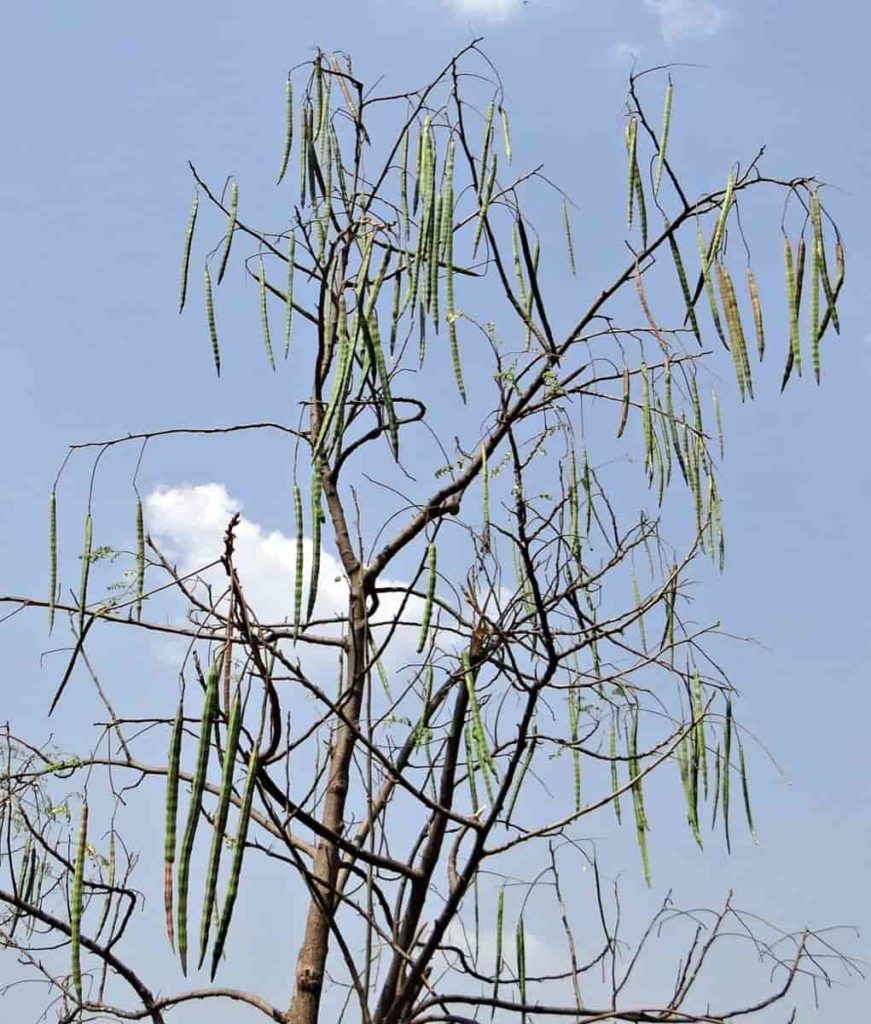
Best fertilizer for Moringa plant
Organic fertilizer
Organic fertilizer is a non-composted material based on plants and animals. Organic fertilizers are more expensive than inorganic fertilizers but are less harmful to the environment and the tree itself. Again, organic fertilizers slow down nutrient excretion because they need to be digested by soil microorganisms.
Applying too much fertilizer helps to improve plant growth. Organic manure or compost can be added to the soil to improve soil fertility. You can also use N-P-K fertilizer to encourage root growth and leaf growth. Remember, you do not apply fertilizers during the growing season.
Inorganic fertilizer
Inorganic fertilizer is the most common choice for homeowners who want to provide their plants with the right nutrients. Inorganic fertilizers are relatively inexpensive and can be absorbed much faster than their organic counterparts. Inorganic fertilizers have been identified as a major limiting factor in the quality of Moringa growth and production.
NPK fertilizer
Moringa trees prefer fertilizers with NPK of 2: 1: 1 or 3: 1: 1, which is 2-3 times more nitrogen than phosphorus and potassium.
In case you miss this: Moringa Pests, Diseases, and Control Methods (Drumstick)
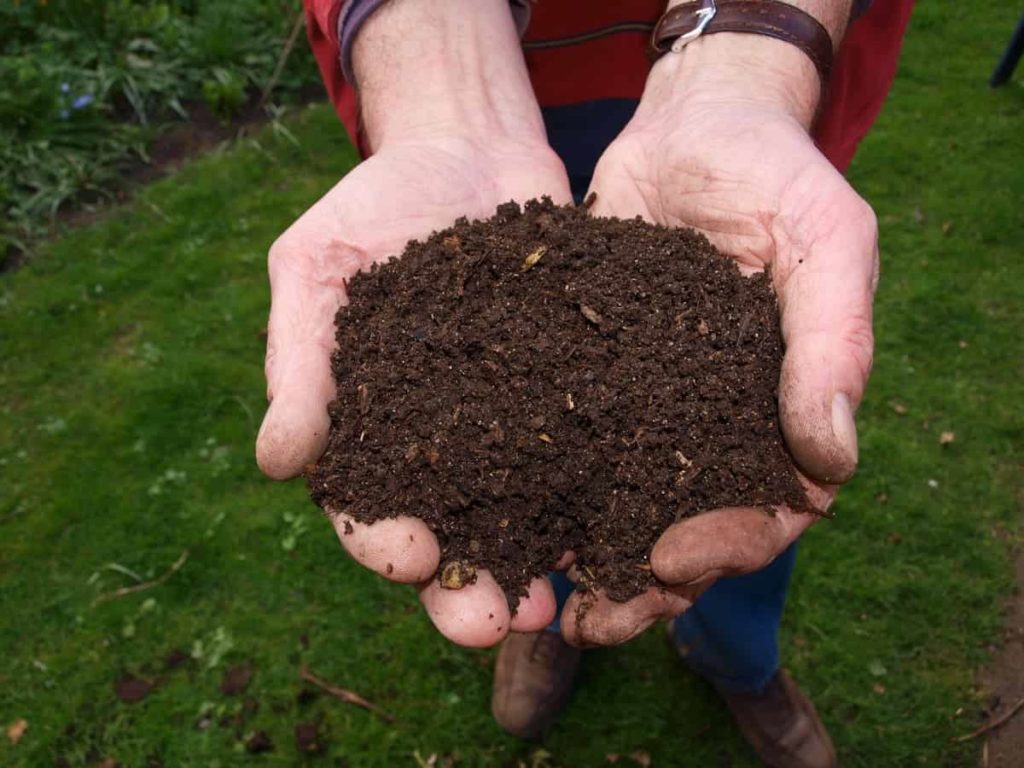
Moringa tree fertilizer schedule
The following fertilizer schedule is adopted for Moringa trees
- 150:150:100 g NPK/tree basal application
- About 500 g poultry manure + 250 g neem cake per pit
If only chemical fertilizer used
- At the time of pinching apply 44: 16: 30 g NPK/ tree
- N (75 days after sowing). Nitrogen by 44 g / tree at first flowering
If only organic
- 10 kg/tree compost as a basal application at sowing time and 20 kg/tree at pruning.
Fertigation in Moringa
- Nutrient required per ha area – 144:24:48Kg (N:P: K)
- Fertigation dose – N:P: K – 144:6:48 kg
| Fertilizer name | Dose (kg/ha) |
| Super Phosphate | 113 |
| 19-19-19 | 32 |
| 13-00-45 | 94 |
| Urea | 274 |
A complete dose of 113 kg of superphosphate must be applied as basal 3 months after planting as superphosphate is insoluble in water.
Fertigation schedule for Moringa
| Stage of crop | Duration of Fertilization | Name of the fertilizer | No. of times | Dosage (kg/ each time) |
| First stage | Three months after planting to 145 days | 19-19-1913-00-45Urea | 11 times11 times11 times | 2.90.77.2 |
| Second stage | 146 days after planting to 190 days | 13-00-45Urea | 9 times9 times | 3.613.0 |
| Third stage | 191-235 days | 13-00-45Urea | 9 times9 times | 5.98.8 |
Fertilizers for homegrown Moringa
Composted chicken manure seems to be the best option if you are cultivating outdoors. For everyone else though, there is no question that you would like to choose fertilizer products with plenty of nitrogen and phosphorus to encourage their growth.
In case you miss this: Moringa Seed Germination Procedure, Spacing, Yield
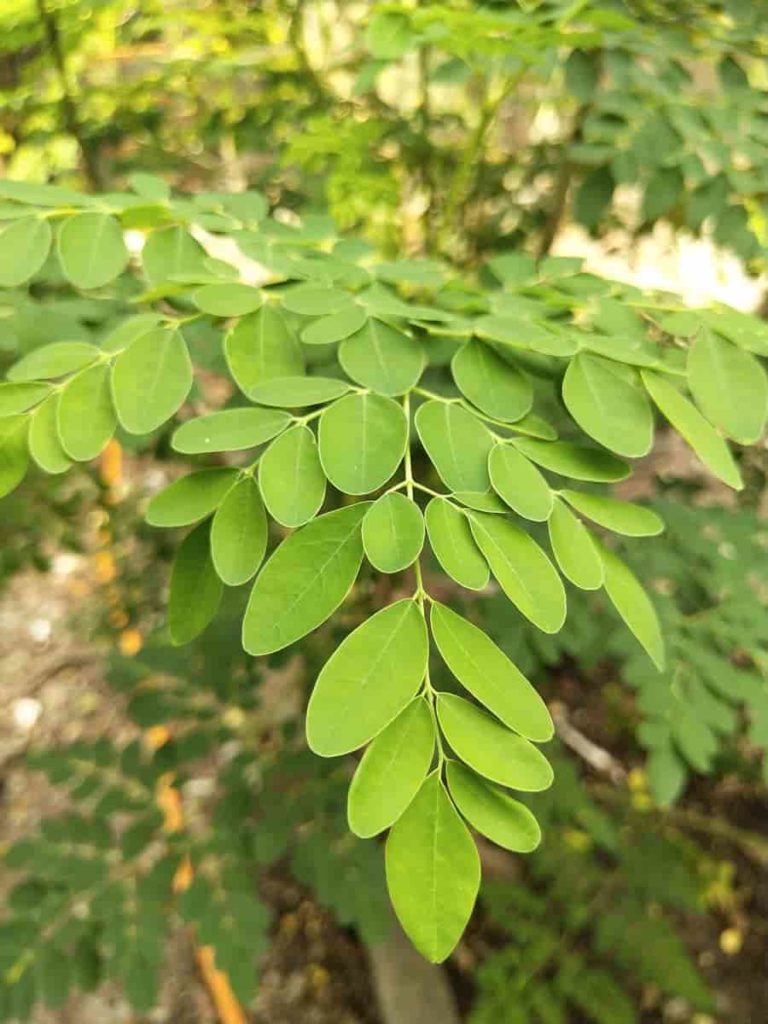
Also consider adding some biochar, as these Moringa plants respond well to this amendment. Because they survive in tropical climates with high nutrient depletion, these trees generally require very little fertilizer. However, if you want bumper production from your hometown of Moringa, you may want to consider some of these products;
- Fox Farm Organic 6-4-4
- Azomite [trace minerals]
- Biochar
For potted Moringa, you can add 1 pound of manure for every 5 gallons of soil. For planted Moringa, aim for 1 pound per 5 square feet of soil and plant 3 inches away from the trunk. If your Moringa plant is not growing well, try first checking its sunlight, water, and soil levels. If you believe it can use some fertilizer, it is best to choose store-bought or manure fertilizer (mixed with soil).
How to fertilize Moringa tree with manure
For Moringa tree growth, a fertilizer dose of about 45:15:30 g NPK / pit can be applied 3 months after sowing. Apply 45 g N / Pit after 6 months when there is crop effect. Manure is one of the best natural fertilizers to use. Be sure to buy fertilizer or process your fresh manure first as it contains high levels of nitrogen and can burn your plant. If your Moringa is planted outdoors, use 1 to 2 pounds of fertilizer for every 5 square feet of garden.
Mix it in the soil to prevent the plants from burning. If it is placed in a pot, the amount of fertilizer depends on the size of the pot. Generally, start with 1 pound of fertilizer for every 5 gallons of soil (mix it with soil). This manure/soil mixture can be easily applied on top of existing soil, but make sure that the fertilizer does not touch the tree as it can burn it with its high nitrogen content.
Sheep and Goat manure
Sheep and goat droppings make excellent manure. Therefore, it is a common practice to ensure the use of sheep and goat droppings in the fields. Sheep and goat manure contains 3% N, 1% P2O5, and 2% K2O.
In case you miss this: Drumstick Farming Project Report (Moringa), Cost and Profit
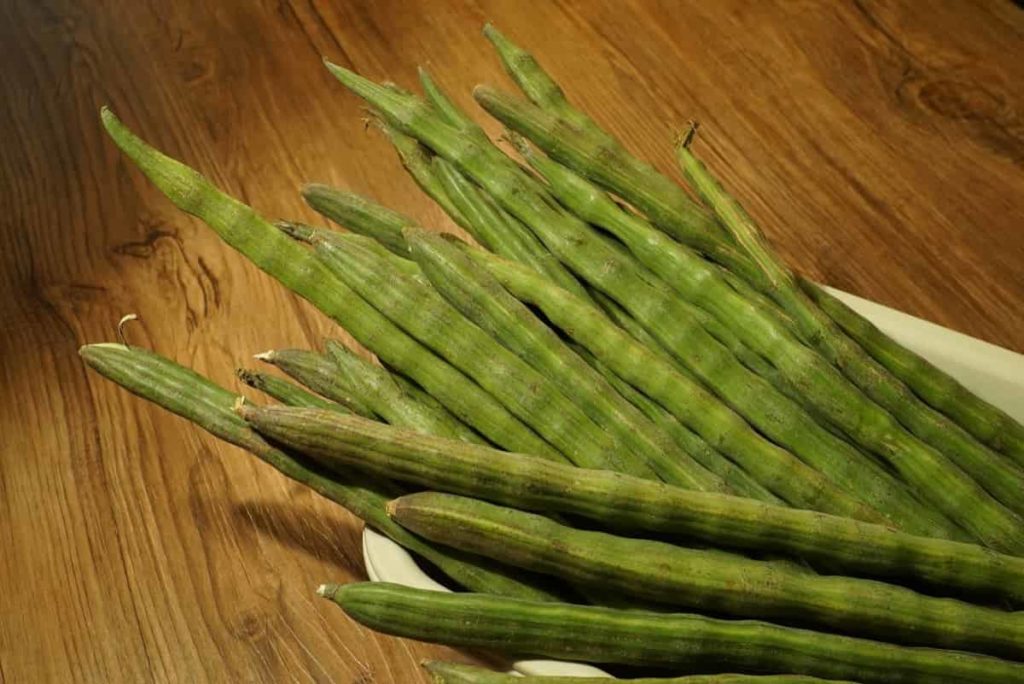
Green manure / green leaf manure
Green manure / green leaf manure is a fresh plant material that is plowed into the soil to add organic matter, thus providing nutrients to the plant tissues. Is. Generally, if a crop is grown and incorporated in the same field, it is called green manure and if the plant material is imported and planted in the field; this exercise is called green leaf manuring. Such crops include legumes and non-legumes.
Poultry manure
This is rich organic manure because liquid and solid excretions are excreted at the same time which does not result in loss of urine. Poultry manure ferments very quickly. If left exposed, it can lose up to 50% of its nitrogen within 30 days. Poultry manure can be applied directly to the ground as soon as possible. After application, it should work on the soil surface.
If the drops come from cages or dropping pits, superphosphate 1 kg per day per 100 birds can be added to them. It improves the quality of fertilizer and helps control flies and odors. The average chemical composition of poultry manure is as follows;
| Type | Moisture% | Nitrogen% | Phosphorus% | Potassium% |
| Fresh | 75 | 1.47 | 1.15 | 0.48 |
| Floor litter | 24 | 3.03 | 2.63 | 1.40 |
Nutrient deficiency symptoms in Moringa tree
| Element | Deficiency symptom |
| Nitrogen | Small and light green leaves |
| Phosphorus | Dark green color foliage, purplish or yellow leaves |
| Potassium | Mottled leaves, yellow color leaf margins, dead leaf tips |
| Iron | New upper leaves turn yellow, brown color edges |
| Magnesium | Lower yellow leaves, curly leaf margins |
Fertilizer for higher yields
Integrated nutrient management
To get higher yields in Moringa trees, 100 g urea, 100 g superphosphate, and 50 g muriate of potash in the third month and again in the sixth month of planting, 100 g urea should be applied top dressing. Integrated nutrient management includes organic manures, bio-fertilizers, and various levels of N, P, and K.
In case you miss this: Organic Farming In Karnataka, How To Start
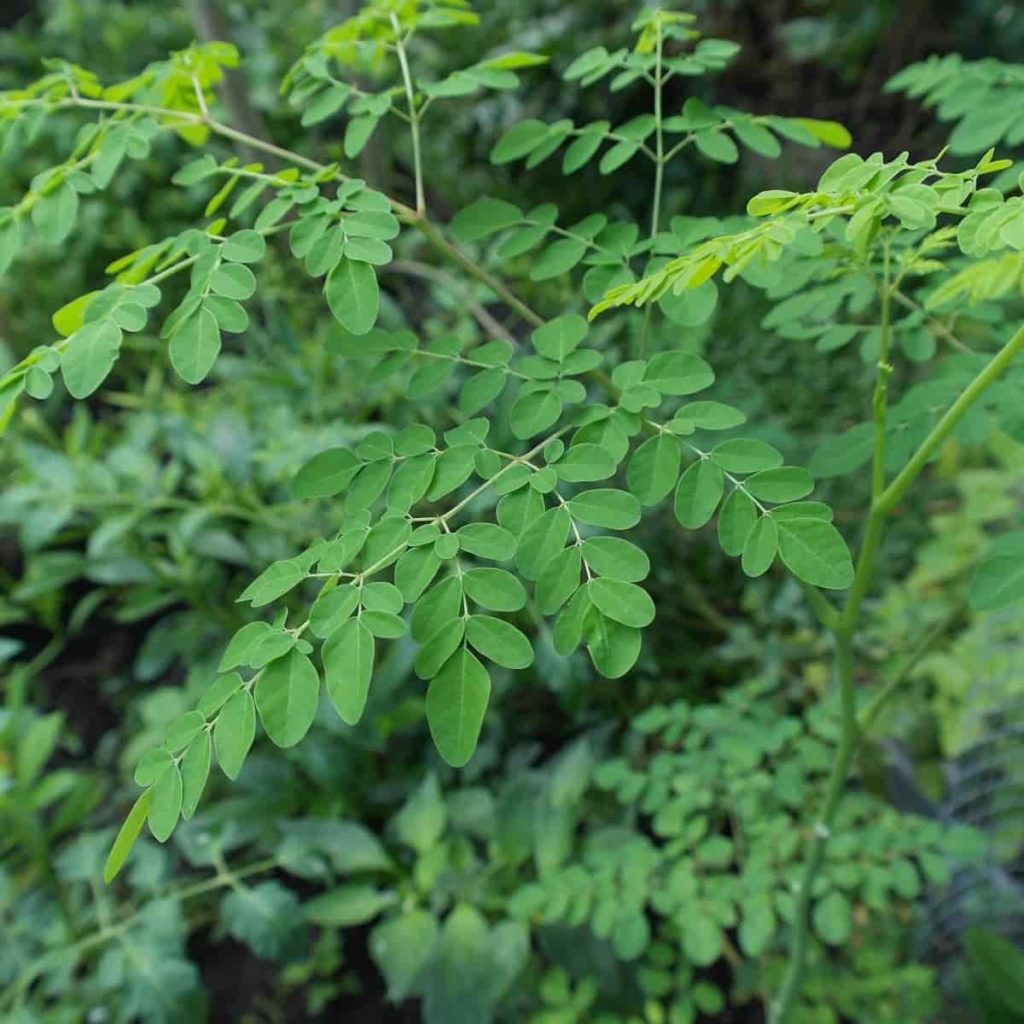
Apply Neem cake by 250 g / pit + poultry manure by 500 g / pit + Panchakavya by 2% spray with 150: 150: 100 g NPK / tree with initial strength in treatment. Fertilizers can also be added to the integrated nutrition management system to increase soil fertility. The following fertilizers are recommended for planting in Moringa.
Farmyard manure
The term farmyard manure refers to the refuse from farm animals, especially cattle, sheep, and poultry. It is one of the oldest manures known for its many beneficial effects when applied to field soils that is maintaining physical and chemical fertility. Farmyard manure is a mixture of four components i.e.; dung, litter (bedding), and urine waste.
The average composition of FYM
- The average FYM contains 0.5% N, 0.25% P2Os and 0.50% K2O.
- One ton of material will provide 5 kg N, 2.5 kg P2O and 5 Kg K2O.
Frequently asked questions about Moringa fertilizers
Why are the leaves of Moringa turning yellow?
The leaves of the Moringa tree may turn yellow due to over-watering / under-watering. They can also turn yellow due to a lack of sunlight or lack of essential nutrients.
Is Moringa high in nitrogen?
The nutrients in the leaves of Moringa were significantly affected by the use of fertilizer application. Poultry manure and NPK increased the nitrogen content of Moringa leaves.
Which is better, Moringa seed or leaf?
Moringa is no different. Seeds are high in nutrients, but they also contain high levels of the ingredients that cause the laxative effects.
- Economical Aquaculture: A Guide to Low-Budget Fish Farming
- 15 Common Planting Errors That Can Doom Your Fruit Trees
- How to Make Houseplants Bushy: Effective Tips and Ideas
- Innovative Strategies for Boosting Coconut Pollination and Yield
- Pollination Strategies for Maximum Pumpkin Yield
- The Complete Guide to Chicken Fattening: Strategies for Maximum Growth
- Natural Solutions for Tulip Problems: 100% Effective Remedies for Leaf and Bulb-Related Issues
- Revolutionizing Citrus Preservation: Towards a Healthier, Greener Future
- Natural Solutions for Peony Leaf and Flower Problems: 100% Effective Remedies
- Maximizing Profits with Avocado Contract Farming in India: A Comprehensive Guide
- Natural Solutions for Hydrangea Problems: 100% Effective Remedies for Leaf and Flowers
- The Ultimate Guide to Choosing the Perfect Foliage Friend: Bringing Life Indoors
- From Sunlight to Sustainability: 15 Ways to Use Solar Technology in Agriculture
- The Ultimate Guide to Dong Tao Chicken: Exploring from History to Raising
- The Eco-Friendly Makeover: How to Convert Your Unused Swimming Pool into a Fish Pond
- Mastering the Art of Delaware Chicken Farming: Essentials for Healthy Backyard Flocks
- 20 Best Homemade Fertilizers for Money Plant: DIY Recipes and Application Methods
- How to Craft a Comprehensive Free-Range Chicken Farming Business Plan
- Brighten Your Flock: Raising Easter Egger Chickens for Beauty and Bounty
- How to Optimize Your Poultry Egg Farm Business Plan with These Strategies
- Subsidy for Spirulina Cultivation: How Indian Government Schemes Encouraging Spirulina Farmers
- Ultimate Guide to Raising Dominique Chickens: Breeding, Feeding, Egg-Production, and Care
- Mastering the Art of Raising Jersey Giant Chickens: Care, Feeding, and More
- Ultimate Guide to Raising Legbar Chickens: Breeding, Farming Practices, Diet, Egg-Production
- How to Raise Welsummer Chickens: A Comprehensive Guide for Beginners
- How to Protect Indoor Plants in Winter: A Comprehensive Guide
- Ultimate Guide to Grow Bag Gardening: Tips, Tricks, and Planting Ideas for Urban Gardeners
- Guide to Lotus Cultivation: How to Propagate, Plant, Grow, Care, Cost, and Profit
- Agriculture Drone Subsidy Scheme: Government Kisan Subsidy, License, and How to Apply Online
- Ultimate Guide to Raising Araucana Chickens: Breed Profile, Farming Economics, Diet, and Care
- Bringing Hydroponics to Classroom: Importance, Benefits of Learning for School Students
- Ultimate Guide to Raising Polish Chickens: Breed Profile, Farming Economics, Diet, and Care
- Ultimate Guide to Raising Australorp Chickens: Profile, Farming Economics, Egg Production, Diet, and Care
- Silkie Chicken Farming: Raising Practices, Varieties, Egg Production, Diet, and Care
- Sussex Chicken Farming: Raising Practices, Varieties, Egg Production, Diet and Care
- Homemade Feed Formulations for Livestock: Discover Cost-effective Starter to Finisher Feed Recipes